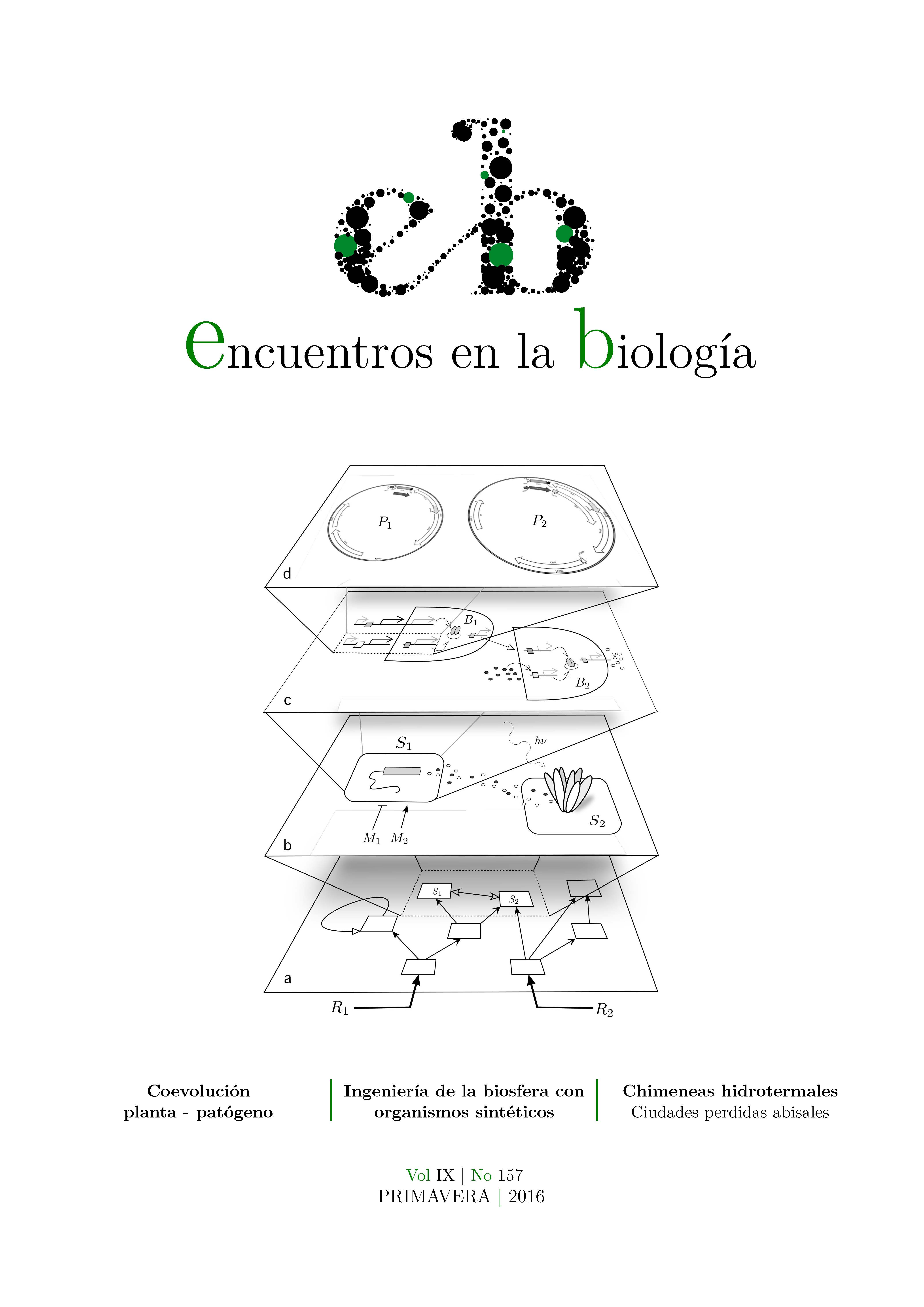Chimeneas hydrotermales y las ciudades perdidas abisales
Palabras clave:
sugerencias hidrotermales, ciudad perdida, biogeoquímica abisal, ecología microbianaResumen
En las zonas más profundas del océano, a miles de metros por debajo de las capas de agua iluminadas por el sol, levantan sus impresionantes estructuras góticas las surgencias hidrotermales. El paisaje fantasmagórico que dibujan alberga una sorprendente diversidad biológica, adaptada a la vida en estos ambientes extremos. Las comunidades que habitan estos oasis del abismo están soportadas por la incansable actividad productiva de bacterias y arqueas, y algunas evidencias apuntan a que la vida pudo comenzar en estos crisoles. Adentrémonos un poco más en estos increíbles ecosistemas.
Descargas
Métricas
Citas
Wankel SD y otros. Influence of substrate biosphere on geochemical fluxes from diffuse hydrothermal fluids. Nature Geoscience, 4: 461-468. 2011.
Dick GJ y otros. The microbiology of deep-sea hydrothermal vent plumes: ecological and biogeographic linkages to seafloor and water column habitats. Frontiers in Microbiology, 4: 1-15. 2013.
Maruyama y otros. Global hydrothermal primary production rate estimated from the southern East Pacific Rise. Cahiers de Biologie Marine, 39: 249-252. 1998.
Beatty y otros. An obligately photosynthetic bacterial anaerobe from a deep-sea hydrothermal vent. PNAS, 28: 9306-9310. 2005.
Pérez N y otros. The potential for photosynthesis in hydrother- mal vents: a new avenue for life in the Universe? Astrophysics and Space Science, 346: 327-331. 2013.
Felbeck H. Chemoautotrophic potential of the hydrothermal vent tube worm, Riftia pachyptila Jones (Vestimentifera). Science, 213: 336-338. 1981.
Kelley DS y otros. A serpentinite-hosted ecosystem: the Lost City hydrothermal field. Science, 307: 1428-1434. 2005.
Proskurowski G y otros. Low temperature volatile production at the Lost City hydrothermal field, evidence from a hydrogen stable isotope goethermometer. Chemical Geology, 229: 331- 343. 2006.
Martin WF y otros. Hydrothermal vents and the origin of life. Nature Reviews Microbiology, 6: 805-814. DOI 10.1038/nrmi- cro1991. 2008.
Braakman R. Mapping metabolism onto the prebiotic organic chemistry of hydrothermal vents. PNAS, 110: 13236-13237. 2013.
Martin WF, Sousa FL, Lane N. Energy at life’s origin. Scien- ce, 344: 1092-1093. 2014.
Brazelton WJ y otros. Methane- and Sulfur- metabolizing microbial communities dominate the Lost City hydrothermal field ecosystem. Applied and Environmental Microbiology, 72: 6257-6270. 2006.
Ohara Y y otros. A serpentinite-hosted ecosystem in the Southern Mariana Forearc. PNAS, 109: 2831-2835. 2012.
Descargas
Publicado
Cómo citar
Número
Sección
Licencia
Esta obra está bajo licencia internacional Creative Commons Reconocimiento-NoComercial-CompartirIgual 4.0.
Esta revista provee acceso libre inmediato a su contenido bajo el principio de hacer disponible gratuitamente la investigación al público. Todos los contenidos publicados en Encuentros en la Bilogía están sujetos a la licencia Creative Commons Reconocimento-NoComercia-Compartirigual 4.0 cuyo texto completo puede consultar en <http://creativecommons.org/licenses/by-nc-sa/4.0>
Se pueden copiar, usar, difundir, transmitir y exponer públicamente, siempre que:
Se cite la autoría y la fuente original de su publicación (revista, editorial y URL de la obra).
No se usen para fines comerciales.
Se mencione la existencia y especificaciones de esta licencia de uso
Los derechos de autor son de dos clases: morales y patrimoniales. Los derechos morales son prerrogativas perpetuas, irrenunciables, intransferibles, inalienables, inembargables e imprescriptibles. De acuerdo con la legislación de derechos de autor, Encuentros en la Biología reconoce y respeta el derecho moral de los autores/as, así como la titularidad del derecho patrimonial, el cual será cedido a la Universidad de Málaga para su difusión en acceso abierto. Los derechos patrimoniales, se refieren a los beneficios que se obtienen por el uso o divulgación de las obras. Encuentros en la Biología se publica en open access y queda autorizada en exclusiva para realizar o autorizar por cualquier medio el uso, distribución, divulgación, reproducción, adaptación, traducción o transformación de la obra.
Es responsabilidad de los autores/as obtener los permisos necesarios de las imágenes que están sujetas a derechos de autor.
Los autores/as cuyas contribuciones sean aceptadas para su publicación en esta revista conservarán el derecho no exclusivo de utilizar sus contribuciones con fines académicos, de investigación y educativos, incluyendo el auto-archivo o depósito en repositorios de acceso abierto de cualquier tipo.
La edición electrónica de esta revista esta editada por la Editorial de la Universidad de Málaga (UmaEditorial), siendo necesario citar la procedencia en cualquier reproducción parcial o total.

